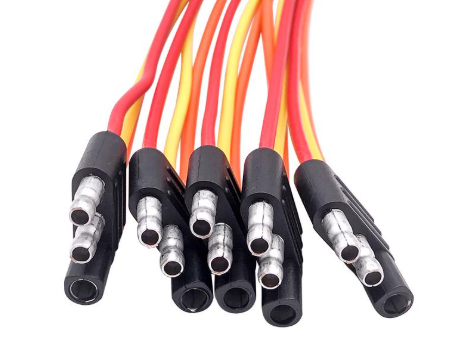Electrical Noise Reduction Strategies Using Twisted Pair Wire Harness Assemblies
In high-tech industries like automotive, aerospace, and industrial automation, electrical interference threatens system reliability, rate of transmission of data, and performance. With newer systems heavily populated with electronic control units, sensors, and high-speed data systems, interference-free, reliable communication is more important than ever. Of all the engineering techniques that serve to reduce interference and help preserve signal integrity, the Twisted Pair Wire Harness Automotive Aerospace setup stands out as one of the best.
Understanding Electrical Noise and Signal Coupling
Electrical noise is defined as unwanted electrical signals that disturb the desired transmission path. These unwanted signals can be generated by electromagnetic fields in motors, relays, high-current conductors, or external RF sources. In a Wire Harness Automotive system, this noise will couple into sensitive signal lines, leading to data errors, voltage fluctuations, or even complete loss of communication.
The coupling effect typically occurs through electromagnetic induction or capacitive coupling. In both cases, the alternating current (AC) or voltage from one wire induces unwanted energy into another nearby wire. In high-density harness systems, such as those used in Twisted Pair Wire Harness Automotive Aerospace designs, minimizing this coupling is vital to ensure clean and accurate data transfer.
The Science of Twisted Pair Design
The science behind twisted pair wiring lies in its ability to cancel out electromagnetic interference through symmetry. Two conductors carrying equal and opposite signals are twisted together at regular intervals. This configuration ensures that any external noise affects both wires equally. When the differential receiver processes the signals, it subtracts one from the other—effectively canceling out the common-mode noise.
This principle, known as common-mode noise rejection, forms the foundation of the Wire Harness Automotive design philosophy. The closer and more consistent the twists, the greater the ability to reject external interference. For aerospace and automotive systems, where hundreds of data and control lines may coexist in compact environments, this balance between twist rate and mechanical flexibility is key to achieving stable and interference-free operation.
Grounding and Shielding for Enhanced Performance
While twisting is the first line of defense against noise, grounding and shielding techniques add another layer of protection. Proper grounding provides a reference potential that prevents unwanted voltages from accumulating within the system. A well-engineered Twisted Pair Wire Harness Automotive Aerospace assembly uses controlled grounding points to prevent ground loops — a common source of low-frequency interference that can disrupt sensitive control systems.
Shielding, usually braided or foil wraps, covers twisted pairs to impede external electromagnetic fields. This prevents the internal signals from being affected by adjacent power circuits or radio frequency interference (RFI). It's important, though, that shield terminations are grounded where required in order to preserve system integrity without establishing secondary paths for noise.
Signal Balance and System Integration
Signal balance is also a critical parameter to be taken into account while designing Wire Harness Automotive and aerospace devices. The pairs must have the same impedance and spacing throughout the harness for offering balanced current share and low signal reflection. With connectors of superior quality such as Molex, JST, Delphi, Yeonho, Sumitomo, or Yazaki, the system achieves balance between electrical performance, mechanical reliability, and integration simplicity.
To accomplish this balance is to achieve precision engineering at every level—from wire selection and twist integrity through to connector termination and harness routing. Each part contributes its share towards system stability, providing accurate data transmission even in high-vibration or high-EMI environments.
Why Choose SINNHONG ELECTRONICS
At SINNHONG ELECTRONICS, we understand that every twisted pair wire Harness Automotive Aerospace application requires more than just electrical connection - it requires engineering precision. Our design and production processes are ISO 9001 certified, and ensure consistency, reliability and performance in each assembly.
Our Automotive Wire Harness solutions are with an eye for adaptability, precision, and compliance with global safety standards. Each phase—from developing prototypes to end testing—is informed by a desire for performance and reliability.

.png)


Comments
Post a Comment